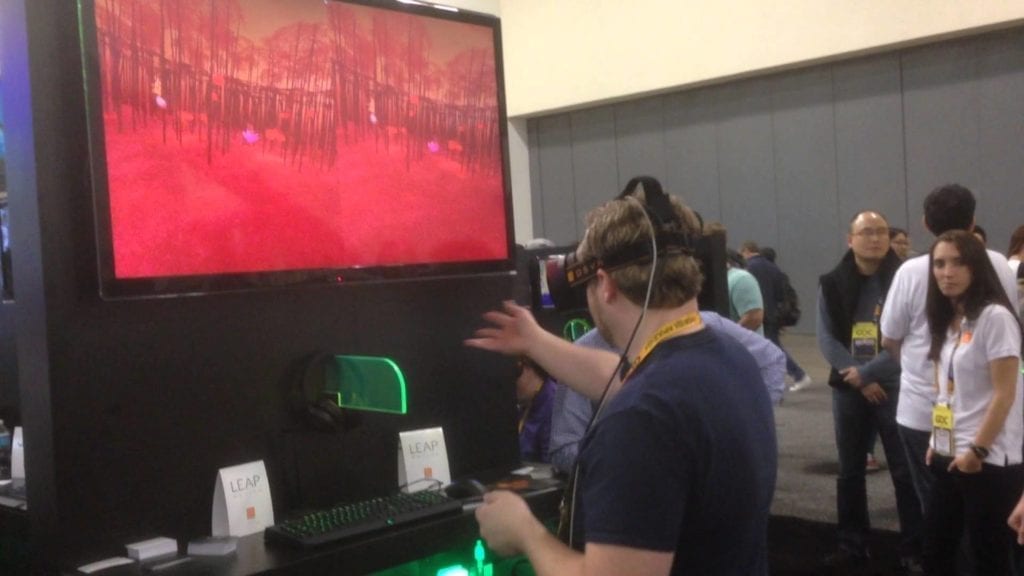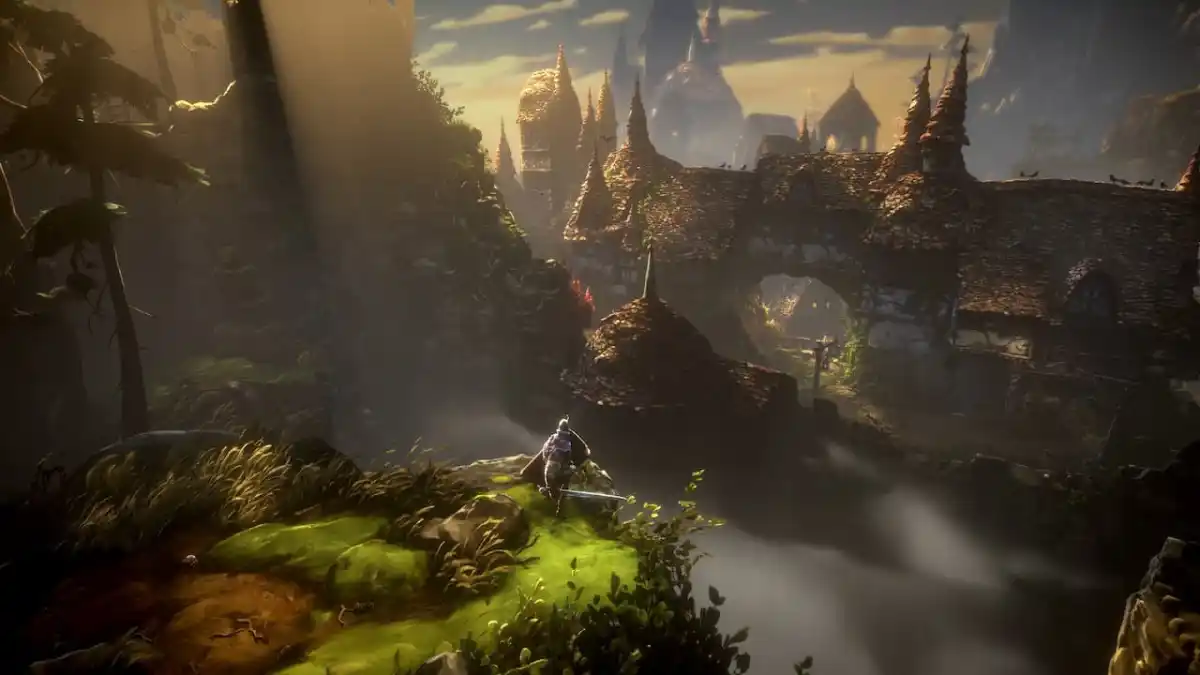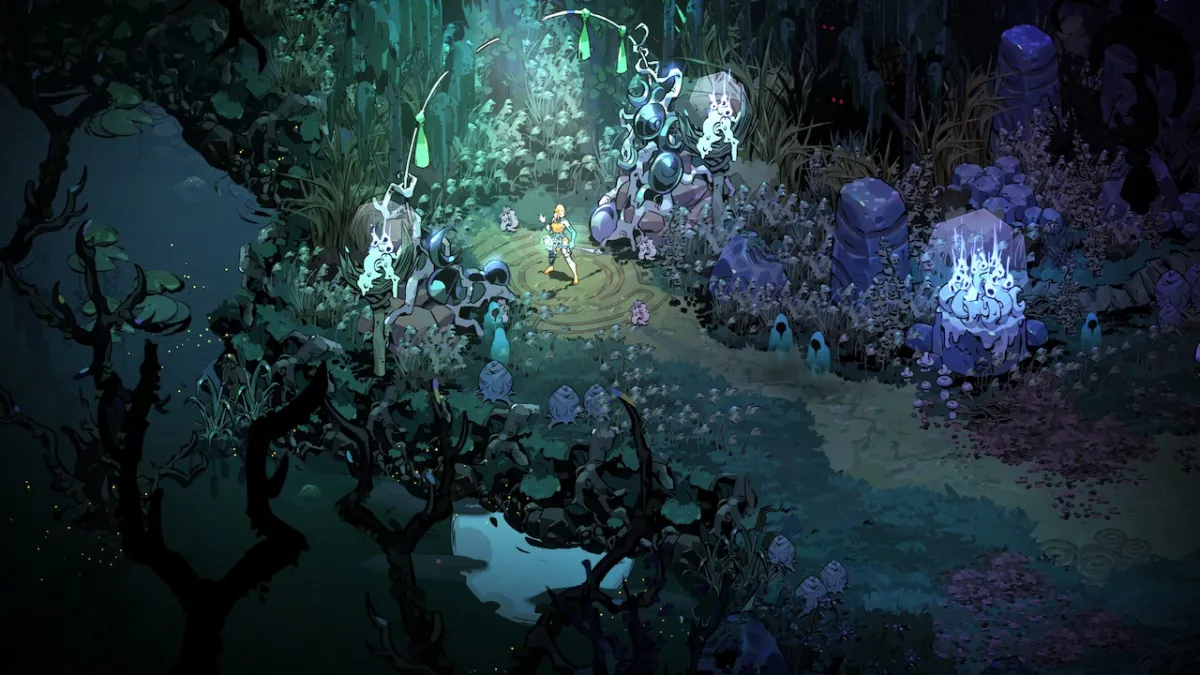The Game Developers Conference (GDC) has a very different feel than that of the Electronic Entertainment Expo (E3), as it should. Both of which I have attended for some years now, and both serve purpose in their own respects. The main difference, for me anyways, is that GDC has a more casual, open feeling when getting hands-on time with games, technology, and spending a few moments to talk with developers about their own successes and hardships within the industry.
Of course, the show is more centered around the developer and the technologies that can be harnessed in order to create your vision and translate that into game form. However, there was one thing about vision that seemed to encompass the new announcements in technology and infiltrate more space on the show floor. That hardware and software was dedicated to the likes of Razer’s newly announced OSVR kits, Steam and its partnership with HTC, and the introduction of Samsung VR via Oculus Rift.
NVIDIA SHIELD and the Titan X VR Experience
The NVIDIA Experience at GDC showcased quite a bit in terms of the consumer. There was the announcement of the Android based device that included streaming services, including games. The NVIDIA SHIELD sets out to bridge the gap that Roku was attempting to do casually, and that is bridge the gap between streaming services and gaming.
Here are some of the specs based on what we saw:
- Tegra X1 Processor
- 16 GB of built in storage–SD/Micro SD cards support. (Up to 128GB)
- USB ports, external HDD support
- HDMI, 4K resolution support
- USB 3.0
- RAM: 3GB of LPDDR3
Aside from the streaming device, NVIDIA keeps its development promise with new drivers and development for their VR support. This came in the form of demonstrating its Titan X running some behind the scenes demos.
The first demo seen dropped you in the middle of a gun battle in a commercial district. As you veer from left to right, you can glance at the details around you. From neighboring soldiers gettin’ plugged by bullets, to other less thrilling structures like a bus stop open with vacancy, there is more added to your typical first-person shooter experience.
It was as if you were dead center in an action movie, but you could freely glance at everything instead of a focused camera angle. One of the most striking portions of the demo was a car getting blown up and launched into the air right in front of me.
At the other end of the street, a walker robot that closely resembled an over-sized Droideka’s from the “Star Wars” series lumbered into view. After easily taking out my fellow squad, or assuming they were, it moved to launch a car into the air. The car was blitzed by gunfire and still had a passenger inside. After being vaulted the car was sent into a tumbling slow-motion haze.
Physically ducking my body, I crouched and peered into the vehicle that floated above. It was insane to see the driver’s body flailing inside as it spun in air. Then, my view was refocused, even startled, by the huge mech that was now in close proximity delivering a sense of fear. It was different knowing that it was a game simulation, but my brain had to re-calibrate itself in understanding that it was in fact not in front of my physical body.
The second demo that was played was a more recognizable feature. After darkness filled the lenses, there was a bright, shimmering light that directed me towards the middle of the screen. The logo of “The Hobbit” segued into the next demo, which was called “Thief in the Shadows.”
This time, as the player, you were able to stand in a rather large room. White pillars created an outline of the far walls, but it was beneath my feet that caught my attention. The room was filled with gold coins and a plethora of bejeweled memorabilia. Only what seemed like a few feet away there was a large chest with a helmet sitting atop. Of course, my first instinct was to walk over to it and try and break it. The demos were interactive in the sense that you could view the room and its contents without any other interaction. However, when it came to the helmet, I was able to get close enough to break the texture and view the empty contents of its shell.
After a few moments of watching the light shimmer off of the gold, a rustle started to build into waves in the gold-distance. A voice boomed with something along the lines of, “I know you’re here, pest.” Then, a large mass moved and before I knew it, I was standing before the great dragon, Smaug.
The entrance of Smaug is greeted with a small speech by the crimson dragon. He slides through the coins as if they were a calm body of water, often making close passes. Then, he grasps a pillar and has it come crashing down, resting his giant claws on it while engaging in conversation. The unwelcome party lasted for a few moments before strange glow started to form in the throat of the dragon. The furnace released flames from the open hatch of Smaug’s mouth, and then the room was lava. Well, not lava, but covered in flames. Again, the smothering of flames engulfed the room and once again my brain was confused.
Within both demos, there was something heavily noted in the experience. I found that game latency was non-existent in veering from left to right, or even behind. The depth was something to highly take into consideration, most represented in the sheer scale of Smaug. Watching him slither above me from head to tail, it was as if his body was never going to end. The same could be felt in the simplistic confines of the FPS experience, being that there was more to look at than just blurry objects in the environment while in a dead sprint.
After seeing the offerings shown by NVIDIA, I was intrigued to see what Razer had to offer on its floorspace.
The Razer’s Edge
Game demos showed off capabilities of a racer from Tammeka Games, which is yet another developer that joins the ranks of supporters like Ubisoft, to take partnership with Razer.
The demos mostly showcased varying experiences with VR, mostly geared towards its Open Source Virtual Reality (OSVR) kick-off. Headsets varied by developer, and offered some things like talks of having access to all assets in order to 3D print your own headsets.
This perspective offers something for game developers. Allowing many different developers to design, code and create seems to offer a more competitive market rather than having only one headset to rule them all (I obviously still had my Smaug encounter in my mind at this point). We’ve already seen improvements, such as changing the display to an OLED, and now more players have entered the game, such as HTC’s partnership with Valve.
We also saw other technology incorporation with the OSVR sets, including Leap Motion (see video below) as well as devices such as Nod, both creating immersion in their own respects. Leap Motion seemed to bridge the gap that Microsoft’s Kinect could never really fulfill in its lifespan. Nod on the other hand–er, finger, allows you to treat you finger like a gun.
Aiming and firing at the demo, which consisted of creepily-crocheted bunnies and elephants, transforms your finger into a machine-gun or pistol. However, the learning curve was very minute and created a different feeling in the FPS atmosphere. Being backed into a corner while bunnies march along is far creepier when they seem only literal inches away. With a few tweaks in sensitivity and the X-Axis and I could see this becoming a more fluid experience.
Another game that turned heads was ElementL: Ghost Story. While looking like a ninja, you can take on floating element ghosts as they fly through bamboo chutes. You place your palms skyward while the Leap Motion tracks them. Then, a ball of either ice or fire is created. It felt very empowering to create these virtual elements. The game was surprisingly addictive with its simplicity. I had made it to level 12 or so before I succumbed to the onslaught of enemies. There was a little trouble tracking your hands after multiple fast movements, which sadly contributed to my demise.
The Un-Samsung Hero
One of the final headsets that I encountered was tucked near the back of the expo floor. The Samsung Mobile VR was available without any lines or wait. But, the smaller booth, was more geared towards the Samsung Gear as a whole. Meaning, the watch and Edge were available to dilly-dally with.
Although lacking in the same excitement, it was interesting to see how exactly the Samsung VR worked. A Samsung Galaxy S6 was placed on the front of the headset, clipped in, and then plugged in with a USB port. Then, the front enclosure was locked into place, hiding away the phone you are now wearing on your head. The side of the headset had a smaller touch pad. I could not help but make comments about how “Cyclops” I felt at that very moment.
The game featured was an on-rails shooter that was a fairly brief demo. Tapping the side interacted with prompts to head forward or to fire at enemies. It did become somewhat of a nuisance considering I was tapping the side of my head to fire away. Although it was great to get some hands-on, a better demo might have changed my perspective. Future development of the platform will surely impress, but I don’t feel the demo that was played really did much to impress.
The Bottom Line:
There’s a lot to be said about the future of gaming, and assumptions that can be made after attending something like GDC. If the industry keeps its focus on virtual reality, there might be some interesting things happening in terms of immersion right down to game psychology that we aren’t even necessarily thinking about in its early stages.
At this point, it seems the general theme of the gaming world is scale. “Make the game bigger!” “Make the game longer than 12-hours.” “Add more DLC, deliver it for free.” “Don’t nickel-and-dime me for content!” But, if we really look at scale in terms of VR, it might even be a chance for developers and large publisher to slow down a bit and really create more atmospheric experiences. This then creates the feeling of scale, but in a far different light.
With the features of Razer’s OSVR and kits, we might see a whole new breed of peripherals and accessories rounding out the PC experience. Steam and Valve still have a large real estate to attend to, mostly consisting of curiosity surrounding Steam Machines and how the roll-out as a whole will go over for consumers.




